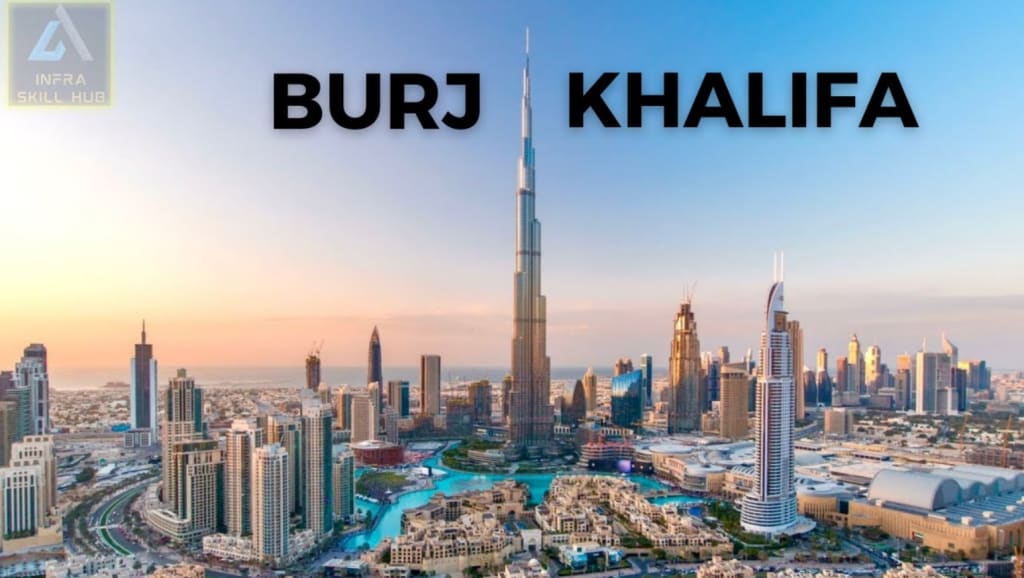Mystery of Burj Khalifa
"Unraveling the Enigma: The Mystery of Burj Khalifa"

The tale begins on a sandy patch of Dubai's landscape, where on the 6th of January, 2004, the ambitious project to construct the world's tallest building commenced. At that time, Taipei 101 in Taiwan held the title, towering at a little over 500 meters. However, the vision for Dubai's skyline was unparalleled—a structure that would not only surpass all existing records but do so by an astonishing 62%. The audacity of this goal was staggering; previous records typically nudged past their predecessors by modest margins of 5% to 10%, at most 19%. Yet, here in Dubai, they aimed for a height of 829 meters, a monumental leap in architectural ambition.
It took approximately 5.5 years of relentless construction efforts, but on the 1st of October, 2009, the world looked up in awe as the Burj Khalifa stood complete, a testament to human ingenuity and determination. Its towering presence not only captivated global attention but also served as a bold statement of Dubai's emergence as a modern marvel. Following its triumphant inauguration, several countries announced plans to challenge its supremacy, igniting a race towards the skies. However, despite numerous attempts over the past 13 years, the record set by the Burj Khalifa remains unassailable. But why? What makes surpassing this architectural behemoth so daunting a task? And how far can humanity realistically push the boundaries of skyscraper engineering?
To unravel these mysteries, one must journey through the annals of architectural history. For millennia, the tallest human-made structures stood as symbols of power and prestige, from the Great Pyramid of Giza to medieval cathedrals. Yet, it wasn't until the late 19th century, with the advent of steel-framed skyscrapers, that humanity unlocked the potential for habitable structures to reach unprecedented heights. The birth of the modern skyscraper era saw cities like New York and Chicago emerge as epicenters of architectural innovation, driven by the demands of a rapidly urbanizing world.
The Empire State Building's reign from 1931 to 1971 epitomized this era of American dominance in skyscraper construction. However, the torch soon passed to Asia, with the Petronas Towers in Kuala Lumpur and Taipei 101 pushing the boundaries further. Then, in 2009, the Burj Khalifa shattered all records, a testament to Dubai's aspirations for global recognition and economic diversification beyond oil.
What sets the Burj Khalifa apart from its predecessors is not just its sheer height but also its innovative design and engineering prowess. Its Y-shaped structure, anchored by a hexagonal core, minimizes wind resistance and ensures structural stability—a feat made possible by advancements like the Buttressed Core system. This engineering marvel not only withstood the test of nature but also showcased Dubai's commitment to pushing the boundaries of what's possible.
However, the quest for taller buildings is not without its challenges. Beyond a certain height, structural integrity becomes a critical concern, compounded by factors such as wind load and material limitations. While theoretical models suggest heights exceeding 2 miles may be achievable with advanced materials and design techniques, practical constraints, such as cost and societal impact, temper such ambitions.
Indeed, the socio-economic landscape plays a pivotal role in shaping the skyline of tomorrow. While cities like Dubai and Shanghai may have the financial means and political will to pursue architectural marvels, others prioritize more pressing needs. Environmental concerns, energy consumption, and urban planning considerations further influence the feasibility of erecting skyscrapers on a monumental scale.
Looking ahead, proposed projects like the Jeddah Tower in Saudi Arabia and the Dubai Creek Tower offer glimpses of what the future may hold. Yet, uncertainties loom large, with geopolitical upheavals, economic downturns, and technological constraints casting shadows over these ambitious endeavors.
In the realm of skyscrapers, imagination knows no bounds. From plans for mile-high towers to futuristic concepts like space elevators, the quest for vertical supremacy continues to capture the human imagination. Yet, amidst these lofty dreams, the Burj Khalifa stands as a towering reminder of what's achievable when vision, innovation, and determination converge.
So, as the world gazes skyward in anticipation of the next architectural marvel, one thing remains certain—the legacy of the Burj Khalifa will endure, a symbol of human aspiration reaching ever closer to the heavens.
About the Creator
ava
The future belongs to those who prepare for it today
Enjoyed the story? Support the Creator.
Subscribe for free to receive all their stories in your feed. You could also pledge your support or give them a one-off tip, letting them know you appreciate their work.






Comments (1)
Interesting to read about Burj Khalifa .